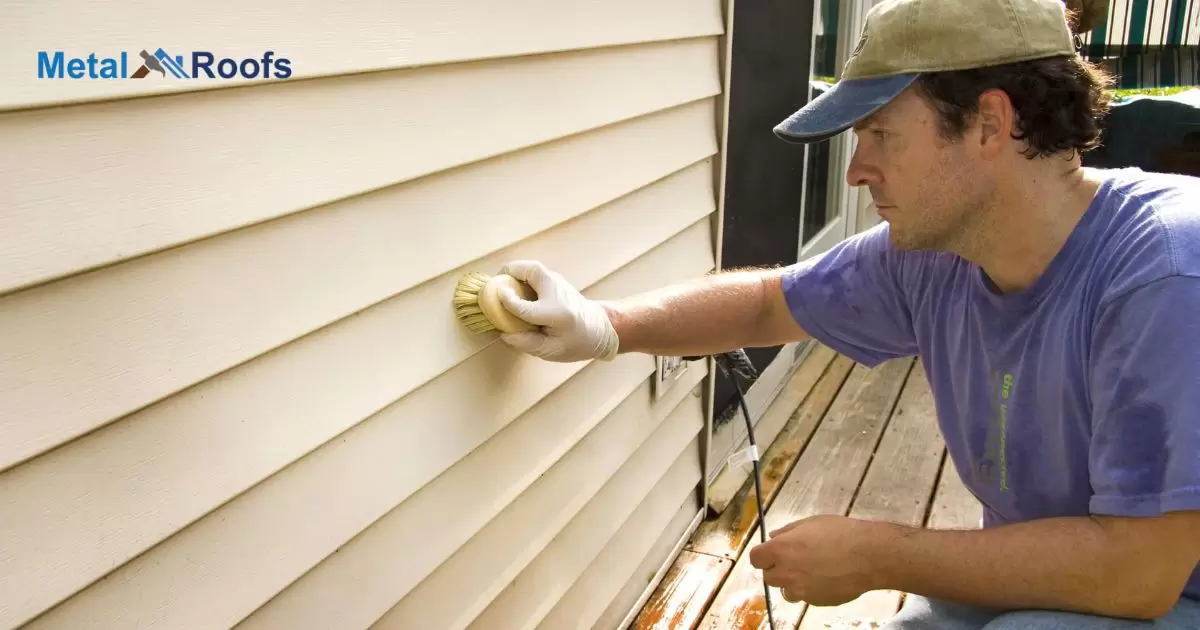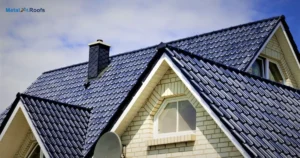Vinyl siding is exterior building material made of PVC. It comes in long, narrow boards that interlock to form a watertight skin. Vinyl siding is durable, low maintenance, and mimics wood grain or painted finishes while resisting moisture, dents, and insects. It’s a cost-effective way to refresh exterior looks of homes and buildings.
Siding comes in many colors. How to color match vinyl siding on repairs? Bring a siding sample to the home store. Employees scan it to precisely match the hue using vinyl formulas. Correct color matching ensures siding uniformity. It keeps your home attractive.
The color formulation is key for matching. Scan the sample first. This provides the color formula. Then employees make sure the new siding order matches it exactly. Precision color matching matters for aesthetics. It makes transitions between old and new siding subtle. This keeps home exteriors looking uniform and pleasing.
Key Takeaways
- Start by obtaining a sample of your existing siding.
- Visit a supplier or use manufacturer resources for color matching.
- Consider customization for a precise match.
- Check samples under various lighting conditions.
- Consulting professionals can offer expertise for the best outcome.
Vinyl Siding Colors
| Color | Description |
| White | Classic, versatile |
| Beige | Warm, blends with surroundings |
| Gray | Contemporary, sophisticated |
| Blue | Serene or bold |
| Green | Natural, outdoorsy |
| Brown | Rich, wood-like |
| Red | Bold, striking |
| Yellow | Cheerful, sunny |
Choosing vinyl siding colors can be daunting but here are some tips. First, obtain a sample of your existing siding if possible. Next, visit a supplier or home improvement store for color matching.
Install an attic fan to improve ventilation and regulate temperature, especially during warmer months. Use manufacturer resources and consider custom options. Check colors under different lighting and consult professionals if needed. Remember, colors may vary due to age or fading.
How to Match Vinyl Siding to Your Existing Siding?
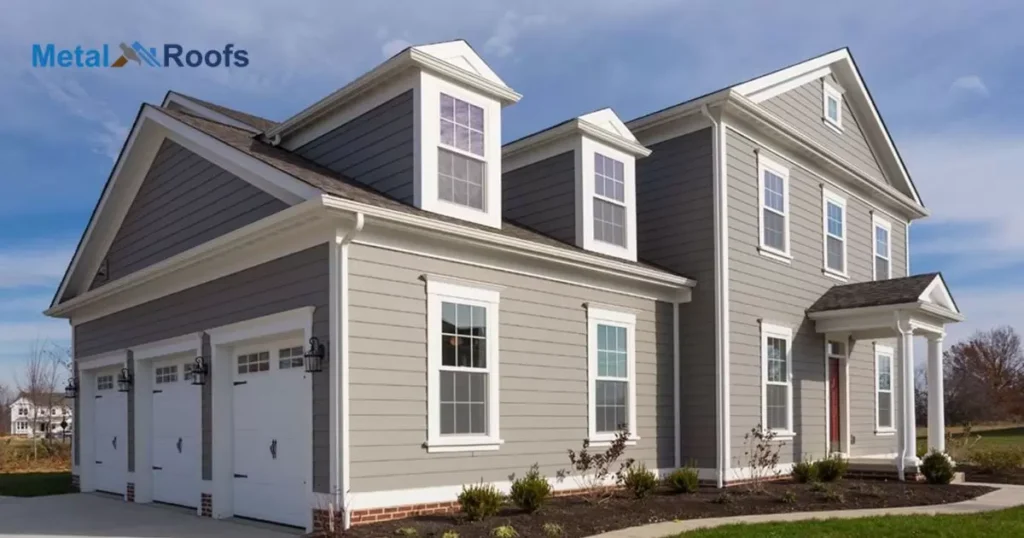
Vinyl siding comes in various colors to match different home styles and preferences. Consider factors like your home’s style, neighborhood regulations, and lighting conditions when choosing a color. Choose wisely to enhance curb appeal and create a cohesive exterior look.
Call Your Siding Contractor
To match vinyl siding to your existing siding, start by calling your siding contractor. Explain your need for color matching and ask for their expertise. They can provide guidance on finding the closest match and may offer professional color matching services.
Take a Sample to a Home Improvement Store
To match vinyl siding to your existing siding, start by taking a sample to a home improvement store. Look for a reputable store with experts who can help you find a close match. Bring along a small piece or a color swatch of your existing siding to ensure accurate color matching.
Safety Considerations
You’ll need a ladder and safety precautions, depending on the size of the vinyl siding replacement project and the amount of damage. Having gloves on can be helpful while removing outdated siding.
Tools
- Zip tool
- Pry bar
- Hammer
- Utility knife
Materials
- Vinyl siding
- Nails
Instructions
To match vinyl siding to your existing siding, start by obtaining a sample of the current siding. Visit a supplier or home improvement store to find a close match. Consider custom options if needed. Check under different lighting conditions to ensure a good match. Finally, consult with professionals for guidance if unsure.
1. Remove Old Vinyl Siding
To remove old vinyl siding, start by preparing the area by removing any obstacles. Use a pry bar to gently loosen the siding panels. Work from the bottom up to avoid damage. Dispose of the old siding responsibly.
2. Remove Nails From Siding
Position the tool under the nail head and carefully pry or punch it out. Work slowly and steadily to avoid damaging the siding. Once the nails are removed, fill any holes with caulk or putty to ensure a smooth surface.
3. Add New Vinyl Siding
Measure and cut the siding panels to fit properly. Install the panels according to the manufacturer’s instructions, starting from the bottom and working your way up. Use appropriate fasteners and ensure proper overlap between panels. Finally, trim and finish the edges neatly for a polished look.
Vinyl Siding Code Lookup
siding to your existing siding, you can use a vinyl siding code lookup tool. Look for the code printed on the back of your current siding piece. This code helps identify the color and style, making it easier to find a matching replacement.
Once you have the code, take it to a vinyl siding supplier or home improvement store. They can help you locate the corresponding siding or find a close match within their inventory. Using the code lookup simplifies the process of matching your existing siding and ensures a seamless transition when replacing damaged or worn-out sections.
Vinyl Siding Manufacturer Codes
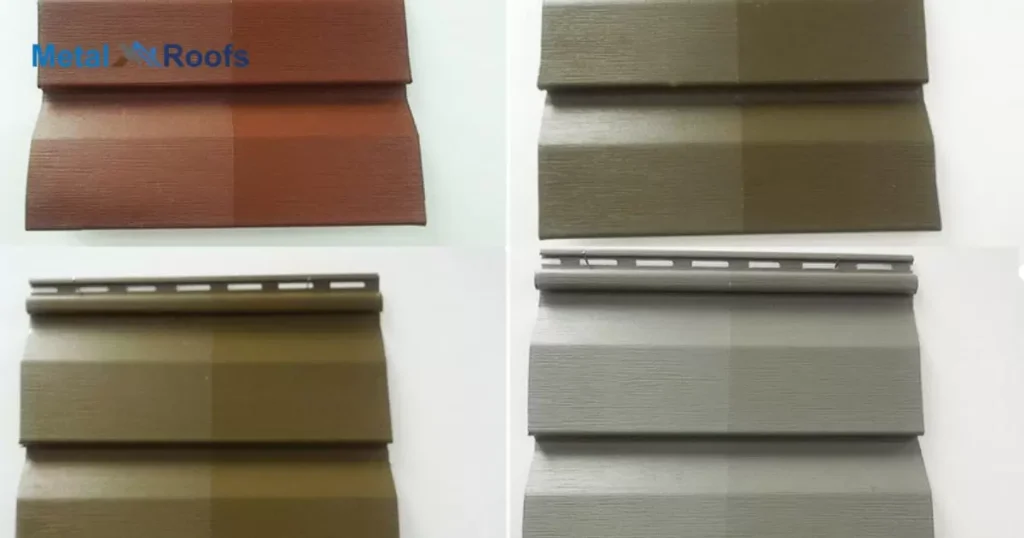
When matching vinyl siding to your existing siding, pay attention to manufacturer codes printed on the back of the siding panels. These codes help identify the type and color of the siding, aiding in finding the closest match possible.
Look for these codes when sourcing new siding to ensure compatibility and a seamless appearance for your home’s exterior. Matching these codes can simplify the process and ensure a cohesive look for your home’s exterior.
Different Colors Work Well for Certain Climates
The choice of colors in architecture, fashion, and design often takes into consideration various factors, including climate. Here’s a brief overview of how different colors can work well in certain climates:
Warm Climates
Light Colors: Light colors like white, cream, light beige, and pastels are often preferred in warm climates. These colors reflect sunlight and heat, helping to keep buildings cooler and reducing the need for excessive air conditioning.
Cool Tones: Cool tones such as blues and greens can also work well in warm climates, as they evoke a sense of coolness and can psychologically lower perceived temperatures.
Cold Climates
Dark Colors: Dark colors like deep blues, grays, browns, and blacks are commonly used in colder climates. These colors absorb sunlight and heat, helping to warm up buildings naturally.
Warm Tones: Warm tones such as reds, oranges, and yellows can add warmth and coziness to interiors in cold climates, creating a welcoming atmosphere.
Humid Climates
Light and Neutral Colors: Light and neutral colors are often favored in humid climates to create a sense of airiness and freshness. Light blues, soft greens, and earthy tones can evoke a connection with nature and help to visually cool down spaces.
Mold and Mildew Resistance: In humid climates where mold and mildew are common challenges, colors that don’t easily show stains or discoloration may be preferred, such as medium tones or patterns that can camouflage imperfections.
Dry Climates
Earthy Tones: Earthy tones like terracotta, sand, ochre, and desert browns are well-suited to dry climates, as they harmonize with the natural landscape and evoke a sense of warmth.
Shades of Blue: In desert regions, shades of blue can also work well, as they contrast with the predominantly warm tones of the environment and create a refreshing feel.
Tropical Climates
Bright and Vibrant Colors: Tropical climates often inspire the use of bright and vibrant colors such as turquoise, coral, magenta, and sunny yellows. These colors reflect the lively spirit of tropical regions and can enhance outdoor living spaces.
Natural Elements: Incorporating natural materials like bamboo, rattan, and wood along with warm, tropical colors can create a harmonious and inviting environment.
In addition to aesthetics, considerations such as energy efficiency, durability, and cultural preferences also play a role in color choices for different climates.
Use a Metal Roof Color Visualizer for Vinyl Siding
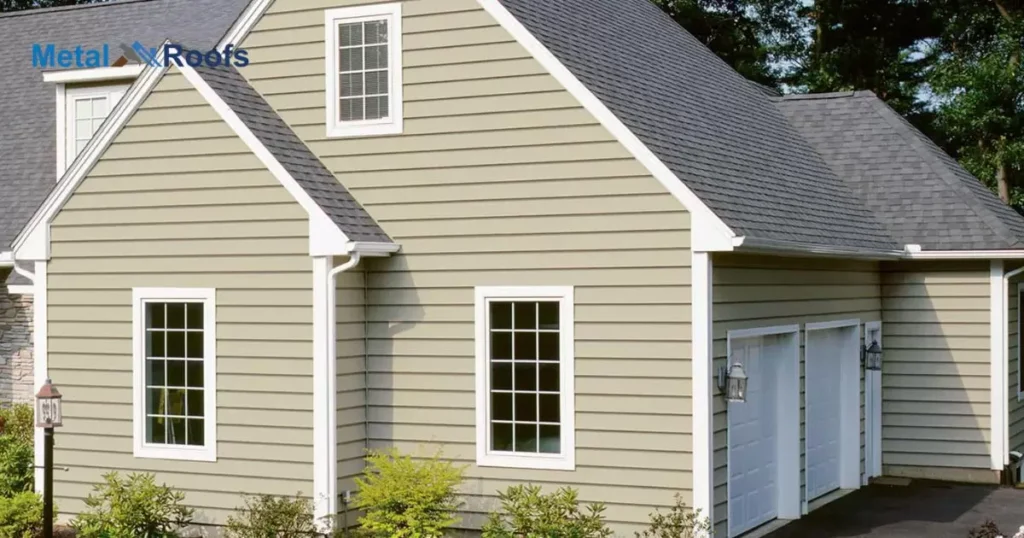
These tools allow you to see how different roof colors will compliment your siding before making a decision. Simply upload a photo of your home and experiment with various metal roof colors to find the perfect match.
By using a metal roof color visualizer, you can ensure that the color combination enhances your home’s overall appearance and curb appeal. Take advantage of this helpful tool to make an informed decision and achieve a cohesive look for your exterior.
Frequently Asked Questions
How do I identify my vinyl siding?
You can identify your vinyl siding by checking for manufacturer markings on the back or consulting with a siding professional for assistance.
How do I find the manufacturer and color of vinyl siding?
Contact a local siding supplier or contractor and provide them with a sample of the siding for identification.
How do I choose the color of my siding for my house?
Consider your home’s architectural style and surroundings, then test samples in different lighting to find the perfect match.
Conclusion
Matching vinyl siding color seems simple. But slight hue differences stand out. Scan samples first to get the formula. Verify ordered siding color matches prior to install. Uniform color is crucial for appealing exteriors. Precision matching new to old avoids costly do-overs. Keep your notes for future color reference.
Correct color matching ensures aesthetic appeal. Transition areas between existing and new blend better. Precision scan-matching and verifying prevents obvious mismatches. Invest time upfront to prevent problems later. Proper prep work leads to quality, uniform results. Your home keeps great curb appeal for years to come.
